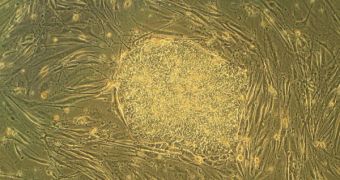Researchers from the University of Pittsburgh School of Medicine claim that they have devised a new treatment for clouded corneas that are no longer able to provide crystal-clear vision, via the use of stem-cell injections. The method is reportedly highly effective in restoring the cornea's transparency and flexibility, and has allowed patients to see much clearer and in greater detail. Details of the find will appear online on April 9th, and a paper will be published in the next issue of the journal Stem Cells.
According to UPSM Department of Ophthalmology Associate Professor James L. Funderburgh, also the senior investigator for the new study, in the future, this new type of therapy could provide physicians with novel methods of treating or even curing human conditions such as corneal blindness, and other types of visual impairments as well.
During the experiments, Funderburgh's team has manged to revert scar-like tissue back to normal, raising hopes that even severe eye injuries could be treated one day, as long as they do not affect the nerves or the body of the eye itself.
“Our experiments indicate that after stem cell treatment, mouse eyes that initially had corneal defects looked no different than mouse eyes that had never been damaged. Corneal scars are permanent, so the best available solution is corneal transplant. Transplants have a high success rate, but they don't last forever. The current popularity of LASIK corrective eye surgery is expected to substantially reduce the availability of donor tissue because the procedure alters the cornea in a way that makes it unsuitable for transplantation,” Funderburgh explains.
His research holds so much promise because the tests were conducted on mice using adult human stem cells. After three weeks of treatment, clarity was restored to the corneas, as well as full transparency. Clinical tests conducted afterwards revealed that the procedures had been a complete success. Experts reason that, if the human cells worked on mice, then they could very well work on humans as well, especially in those patients with scar tissues on their eyes, following accidents or inflammation.

 14 DAY TRIAL //
14 DAY TRIAL //